Embarking on a road trip alone is a unique adventure, offering unparalleled freedom and the chance to truly connect with yourself and the places you visit. The open road calls, promising discovery, personal growth, and the flexibility to explore diverse landscapes, delve into local cultures, and savor regional flavors at your own pace. Yet, the idea of hitting the highway solo, especially for the first time, can feel daunting.
Questions about safety, planning, and navigating the unknown often arise. Don’t let hesitation hold you back! As your guide to traveling the world, exploring everything from vibrant history to unique culinary scenes, I’m here to share essential tips to make your road trip alone an incredible and safe experience. Let’s hit the road with confidence!
Why Embrace the Journey: The Appeal of a Road Trip Alone
The allure of a solo road trip alone lies in its complete autonomy. You are the captain of your own journey. Want to spend an extra hour exploring a fascinating historical landmark? Go for it. Feel like pulling over to sample street food in a small town that caught your eye? Absolutely. Hear a local band playing and decide to stay the night? That’s the beauty of it. A solo road trip strips away compromise and allows you to follow your instincts and interests without external constraints.
Beyond the freedom, a road trip alone fosters introspection and resilience. Facing challenges on the road by yourself builds confidence. You learn to rely on your own judgment, problem-solve on the fly, and become more attuned to your surroundings. It’s a powerful way to disconnect from daily routines and reconnect with yourself, all while soaking in the diverse tapestry of the world outside your window.
What to Eat in Fort Worth – A Culinary Deep Dive
Discover the Top Restaurants in Denver – A Culinary Journey
Discover Where to Visit in Las Vegas
For women considering taking to the road independently, many of the safety tips outlined below are particularly pertinent. Exploring new regions and cultures solo offers an unmatched sense of empowerment and self-discovery. For more tailored advice, you might find valuable insights for a women road trip from those who have navigated the solo female travel experience specifically on the road.
Prioritizing Safety on Your Solo Journey
Safety is paramount when undertaking a road trip alone, regardless of gender. While the open road is generally welcoming, being prepared and aware is your best defense against potential issues.
Planning is Your Best Friend
Spontaneity is great, but solid planning is non-negotiable for a safe solo road trip. Before you even turn the key, map out your route, potential stops, and overnight accommodations. Knowing where you’re likely to end up each day reduces stress and prevents you from having to scramble for a place to stay in an unfamiliar area late at night.
Research destinations along your route, checking for things like local events, points of interest related to culture or history, and even highly-rated local eateries. For instance, if your route takes you through Texas, planning a stop to find the best bbq in austin can be a delicious goal! Having these waypoints planned gives your trip structure while still allowing for flexibility.
Share Your Itinerary and Location
Once your plan is set, share it with a trusted friend or family member. Let them know your rough daily schedule and intended destinations. Consider sharing your real-time location via a phone app. This provides a crucial safety net; someone knows where you are supposed to be and can check in on you. Make it a habit to send a quick message when you arrive at your accommodation for the night. Keep your phone charged using a reliable power bank to ensure you can always communicate in an emergency.
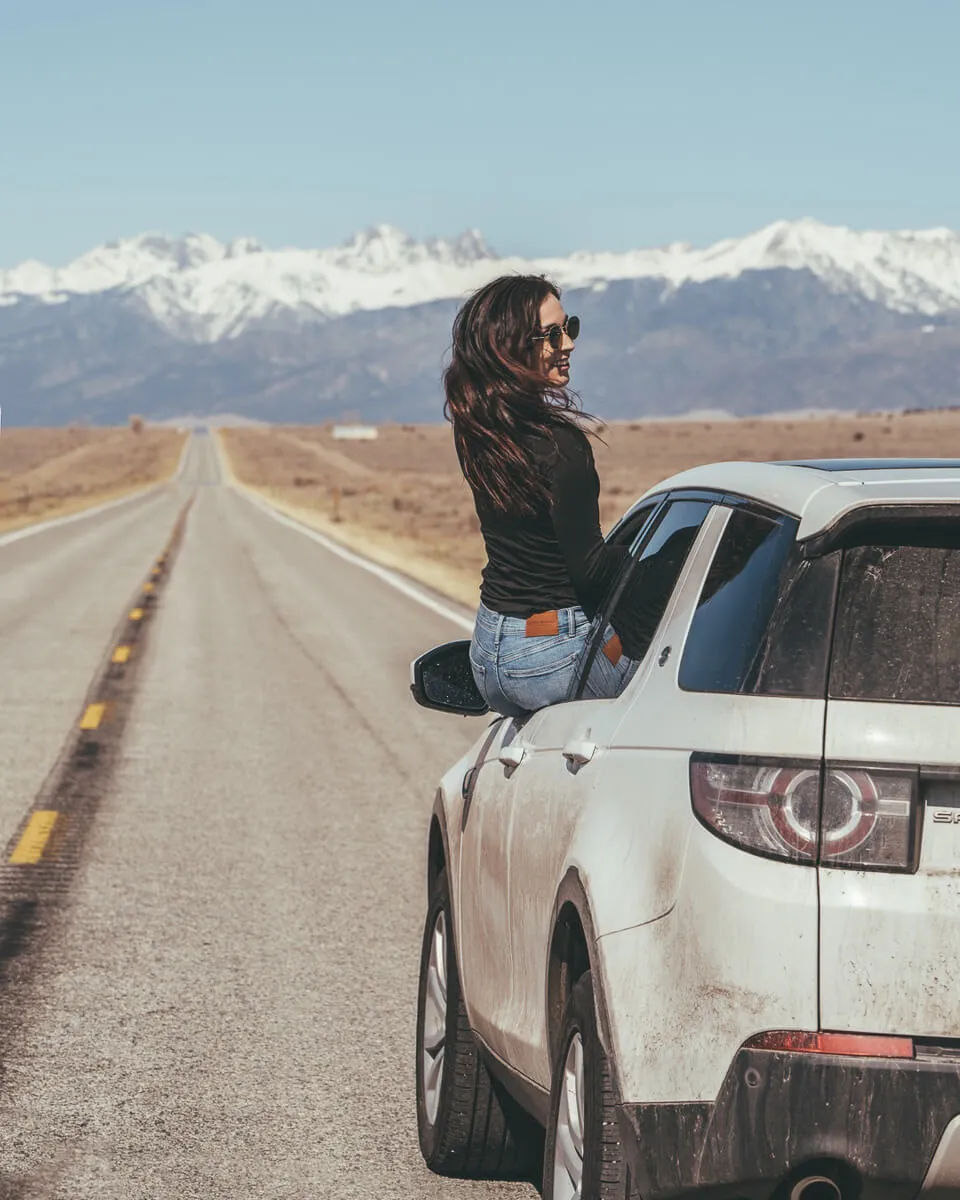 Road photo with the Sangre de Cristo Mountain range in the background
Road photo with the Sangre de Cristo Mountain range in the background
Capturing the vastness of the American landscape during a solo driving adventure, with the majestic Sangre de Cristo Mountains towering in the distance.
Maintain a Low Profile
While you might be excited about your road trip alone, it’s generally wise to avoid announcing to strangers that you are traveling solo. Be mindful of what you post on social media in real-time. If asked directly, you can politely deflect or give a vague answer that suggests you are meeting someone or have family nearby. This isn’t about being paranoid; it’s simply a practical measure to minimize potential risks in unfamiliar environments.
Avoid Driving After Dark
Driving in unfamiliar territory is challenging enough in daylight. Doing so after dark significantly increases the risk of accidents and leaves you vulnerable if you encounter vehicle trouble in a remote or poorly lit area. Plan your driving time so you arrive at your destination well before sunset. If you’re running late, find a safe, well-lit place to stop for the night, even if it means adjusting your original plan.
Secure Your Valuables
Never keep all your important documents and money in one place. If your wallet is lost or stolen, having a backup stash of cash and another credit card hidden elsewhere in your vehicle can be a lifesaver. Keep copies (physical and/or digital, securely stored) of your ID, passport (if applicable), credit cards, and vehicle registration. This information is essential for replacing lost items or dealing with emergencies. A small, discreet hip pack or a hidden pocket in your clothing can be useful for keeping essentials on your person at all times.
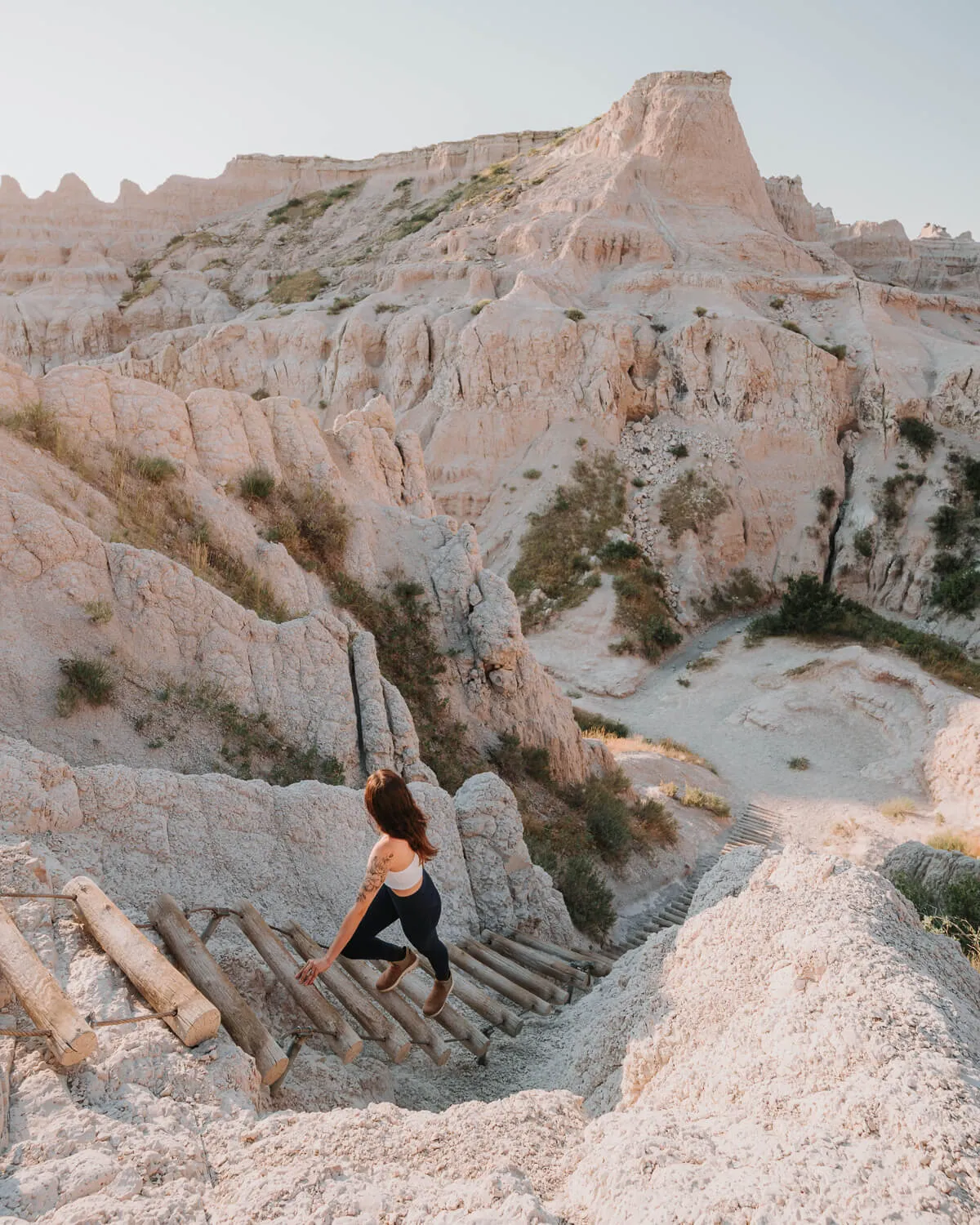 Woman hiking the Notch Trail in Badlands National Park
Woman hiking the Notch Trail in Badlands National Park
A hiker pauses on the rugged Notch Trail in Badlands National Park, a moment of solitude amidst the dramatic South Dakota landscape.
Vary Your Routine
If you’re staying in one location for a few days during your road trip alone, try not to fall into a predictable routine. Changing the time you leave your accommodation, taking different routes for walks, or visiting different coffee shops or restaurants makes you less of an easy target for anyone observing habits.
Stay Hyper-Aware and Trust Your Gut
This is perhaps the most critical safety tip. When you’re on your own, constant awareness of your surroundings is essential. Limit distractions like your phone when walking, getting gas, or entering/leaving buildings. Make eye contact with people you pass – it signals confidence and awareness. More importantly, pay attention to your instincts. If a situation feels off, or a person makes you uncomfortable, remove yourself immediately. Your gut feeling is a powerful safety tool; listen to it without second-guessing yourself. You don’t owe explanations or pleasantries to anyone who makes you feel unsafe.
Carry Personal Protection
The type of personal protection you choose is a matter of personal comfort and legality in the areas you are traveling. Options range from pepper spray or a stun gun (research state laws regarding legality and carrying) to a loud personal safety alarm. Having something readily accessible can provide peace of mind and a means of defense if absolutely necessary.
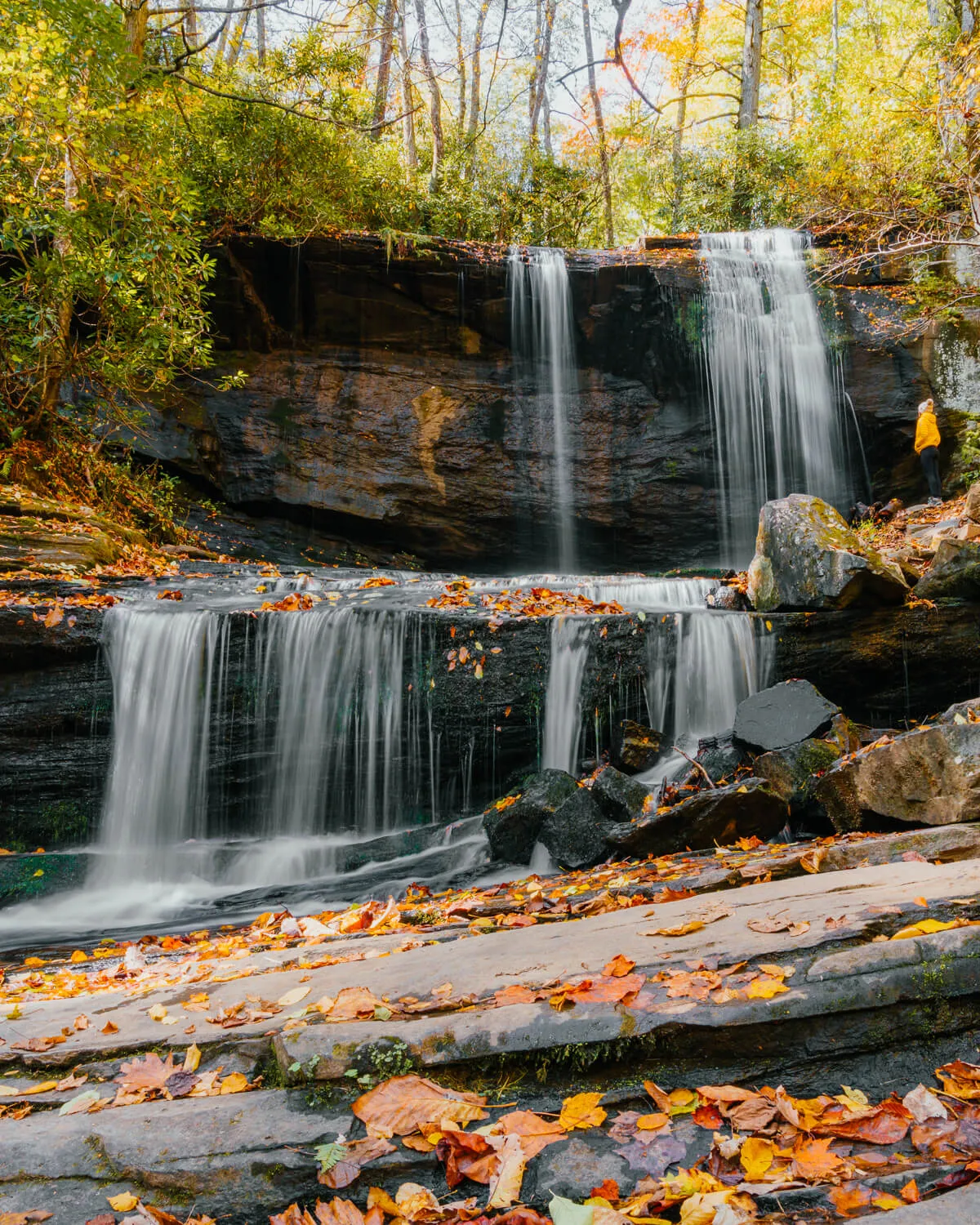 Woman standing in front of Grassy Creek Falls in Little Switzerland, NC
Woman standing in front of Grassy Creek Falls in Little Switzerland, NC
Discovering the peaceful beauty of Grassy Creek Falls near Little Switzerland, North Carolina, a serene stop on a solo drive along the Blue Ridge Parkway.
Know How to Contact Emergency Services
Keep your phone charged and know how to quickly dial emergency services (911 in the US, or the relevant number for the country you’re in). If you feel threatened or unsafe, having your phone out and emergency services already dialed and ready to press the call button can be a deterrent and ensures help is just a tap away.
Practical Preparedness for the Open Road
Beyond personal safety, practical preparation ensures your road trip alone runs smoothly and minimizes potential disruptions.
Cultivate Flexibility and Problem-Solving Skills
Even the best-laid plans can encounter bumps in the road. A sudden road closure, a booked-out hotel, or unexpected weather can throw off your itinerary. Learning to be flexible and approach challenges with a problem-solving mindset is key. Know that you can handle unexpected situations. Having resources like hotel booking apps or alternative route planning tools ready can help you adapt quickly.
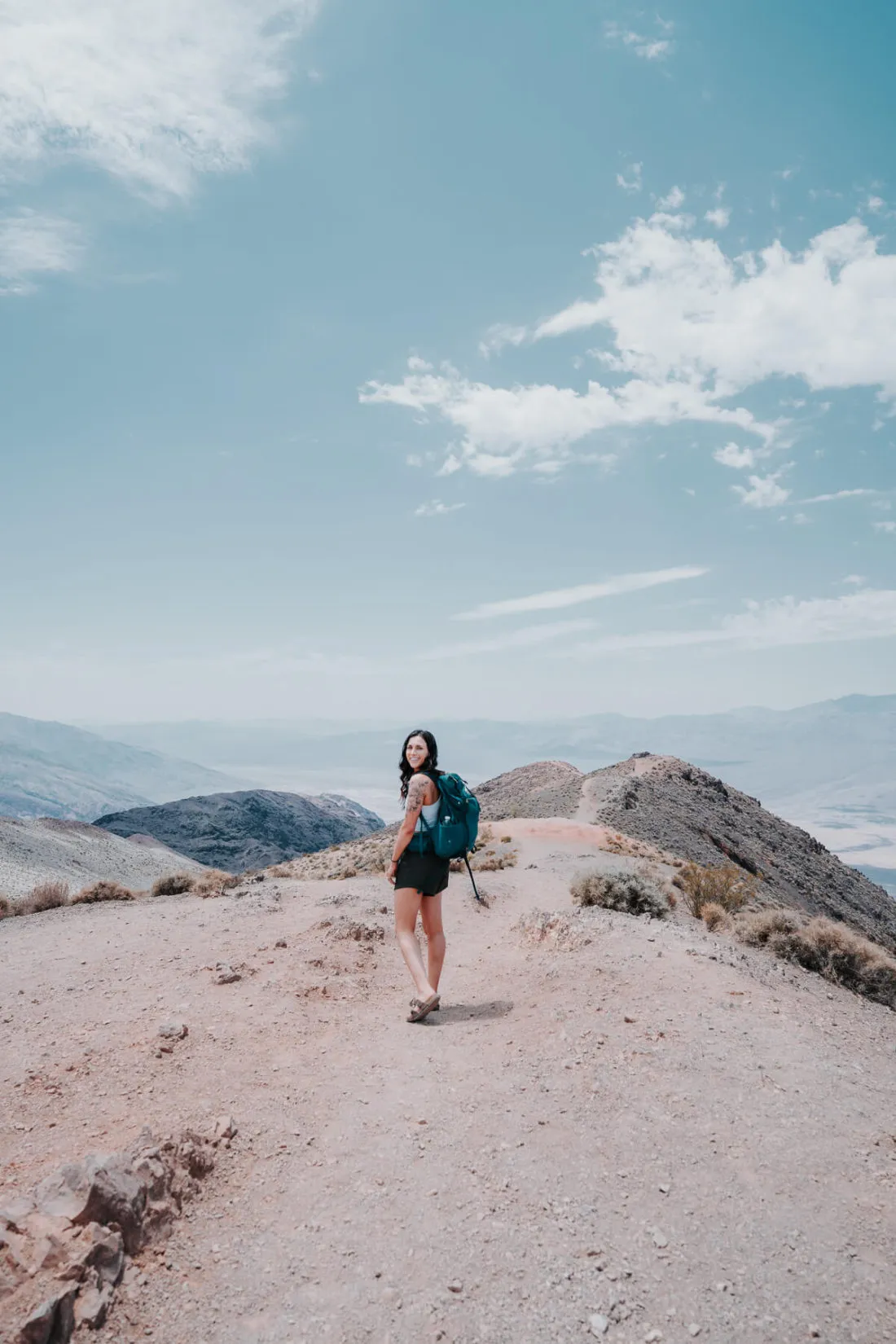 Woman hiking at Dante
Woman hiking at Dante
Taking in the dramatic, expansive views of Death Valley National Park, a humbling experience when traveling alone.
Choose Your Stops Wisely
When you need to stop for gas or use the restroom, be strategic. Well-lit, busy gas stations or truck stops are generally safer options than isolated rest areas, especially at night. A helpful tip many solo female travelers use is to stop at hotels for restroom breaks – the lobby restrooms are usually clean, safe, and you can easily blend in without needing to be a guest.
Keep Your Gas Tank Full
Don’t let your fuel level drop too low. Aim to refuel when your tank reaches half-full, especially when driving in rural or remote areas where gas stations may be few and far between. This prevents you from being forced to stop in a questionable location simply because you’re running on empty.
Utilize Offline Maps
Cell service can be spotty or non-existent in many beautiful, remote locations. Before you head out, download offline maps for the areas you’ll be traveling through using apps like Google Maps. This ensures you can navigate even when you’re off the grid.
 Female backpacker at Baker Lake in Montana
Female backpacker at Baker Lake in Montana
A solo backpacker enjoying the serene beauty of Baker Lake in Montana, a perfect destination for connecting with nature on a solo trip.
Invest in Roadside Assistance
Mechanical issues can happen to any vehicle, anywhere. Having a roadside assistance plan (like AAA) provides peace of mind knowing that help is just a phone call away if you experience a flat tire, engine trouble, or run out of gas. Check if any of your existing insurance policies or credit cards offer this benefit before signing up for a new service.
Building Confidence and Enjoying the Experience
Taking a road trip alone is not just about getting from point A to point B; it’s about the journey itself – the sights, the sounds, the experiences, and the personal growth.
Start Small to Build Confidence
If the idea of a long cross-country road trip alone feels overwhelming, start with smaller trips. Take a day trip to a nearby town, or an overnight trip a couple of hours away. These shorter excursions allow you to practice your planning, safety measures, and navigation skills in a less intimidating environment. As you successfully complete these smaller trips, your confidence will grow, paving the way for longer adventures.
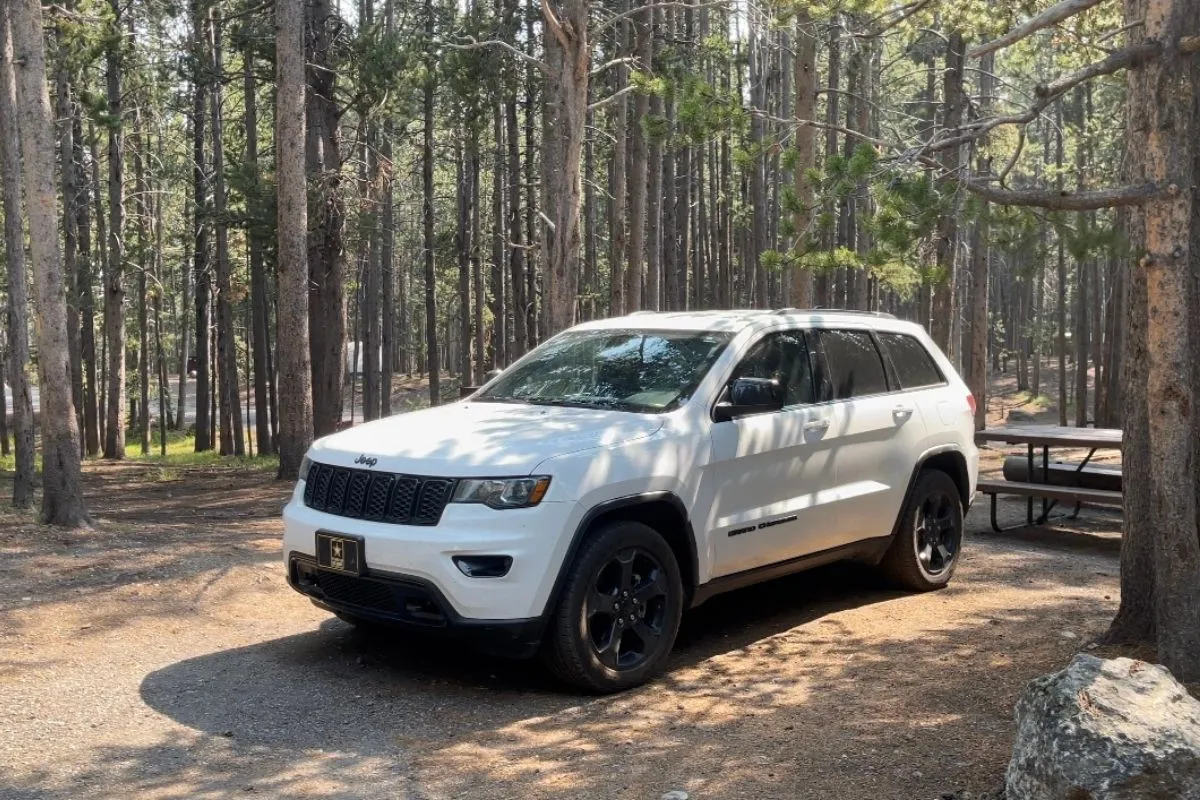 White Jeep Grand Cherokee in Canyon Campground in Yellowstone National Park
White Jeep Grand Cherokee in Canyon Campground in Yellowstone National Park
A vehicle parked at Canyon Campground in Yellowstone National Park, ready for a solo exploration of this iconic natural wonder.
Embrace the Journey and Relax
While staying aware is important, don’t let safety concerns overshadow the joy of your road trip alone. Allow yourself to relax, soak in the scenery, enjoy the freedom, and savor the unique experiences that solo travel offers. Listen to your favorite music or podcasts, enjoy the silence, visit that quirky roadside attraction, or simply pull over at a scenic overlook to appreciate the view. This is your adventure!
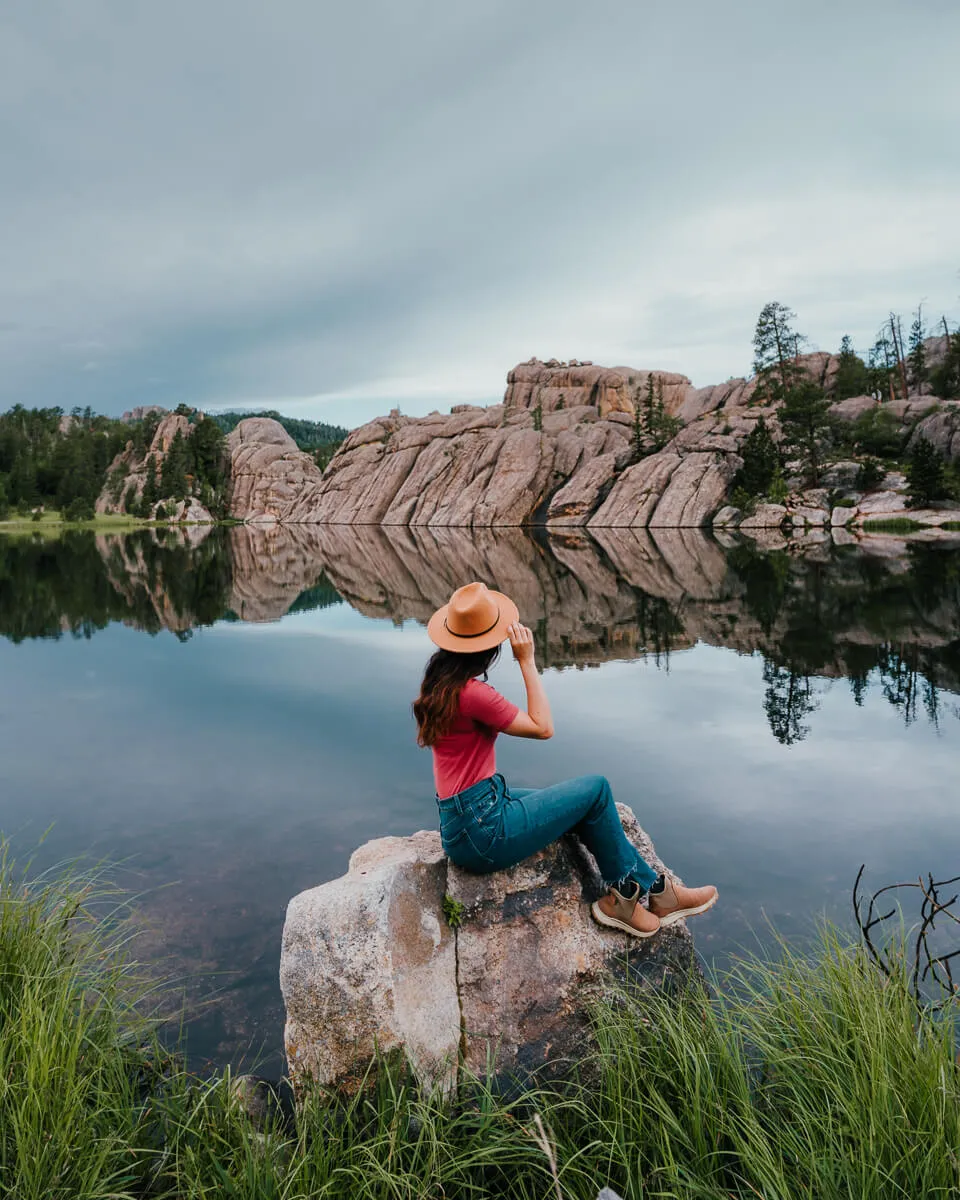 Woman admiring Sylvan Lake in Custer State Park, South Dakota
Woman admiring Sylvan Lake in Custer State Park, South Dakota
Admiring the tranquil waters of Sylvan Lake in Custer State Park, South Dakota, finding peace and beauty on a solo travel day.
Conclusion
A road trip alone is a profound way to explore both the world and yourself. It offers unparalleled freedom, a chance for deep cultural immersion (even through simple things like trying local food or chatting with locals at a roadside diner), and the opportunity to discover incredible places at your own pace. While safety and preparedness are key, don’t let fear prevent you from experiencing this incredibly rewarding form of travel. With careful planning, awareness, and a willingness to embrace the unknown, your solo road trip can be one of the most memorable and empowering journeys of your life. The road is calling – are you ready to answer?
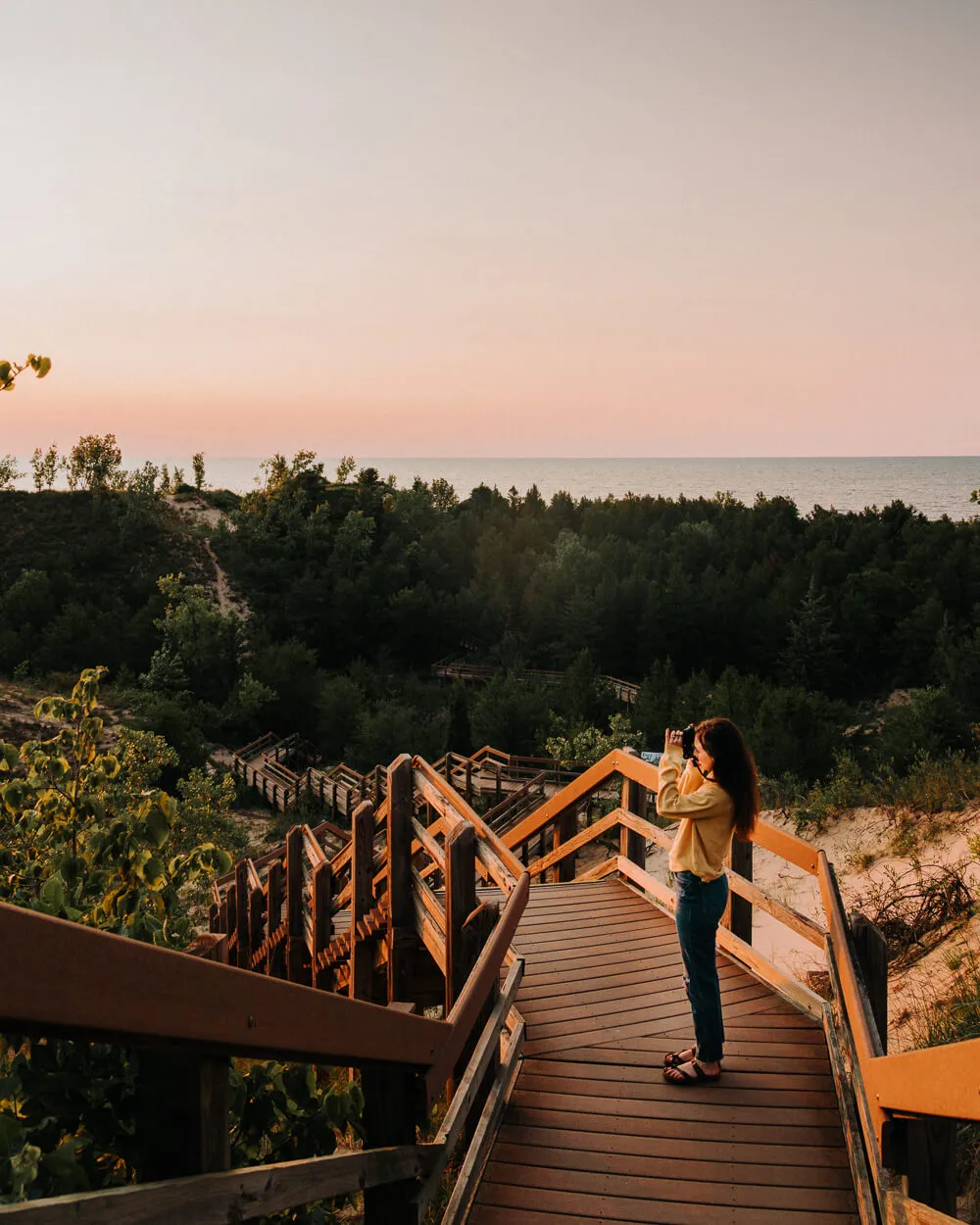 Woman hiking the Dune Succession Trail in Indiana Dunes National Park
Woman hiking the Dune Succession Trail in Indiana Dunes National Park
Hiking the challenging Dune Succession Trail in Indiana Dunes National Park, reflecting on the personal journey of a solo road trip.
 Download offline maps in Google Maps tutorial
Download offline maps in Google Maps tutorial Download offline maps in Google Maps tutorial
Download offline maps in Google Maps tutorial Download offline maps in Google Maps tutorial
Download offline maps in Google Maps tutorial
Visual guide demonstrating the simple steps to download offline maps using Google Maps, an essential preparation for solo road trips.
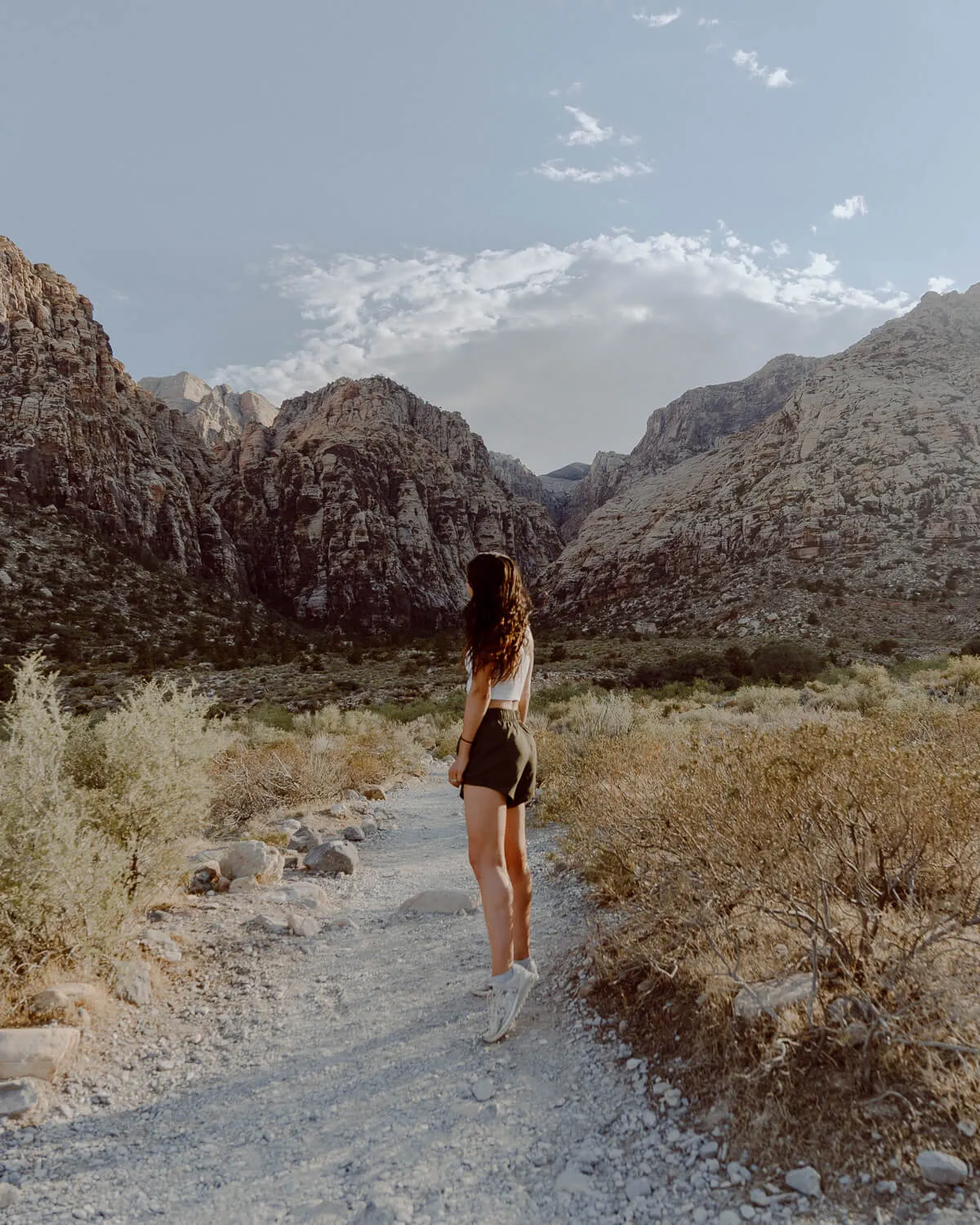 Female hiker at Red Rock Canyon in Nevada
Female hiker at Red Rock Canyon in Nevada
Exploring the vibrant geological formations of Red Rock Canyon in Nevada, finding inspiration and solitude on a solo hiking adventure.
